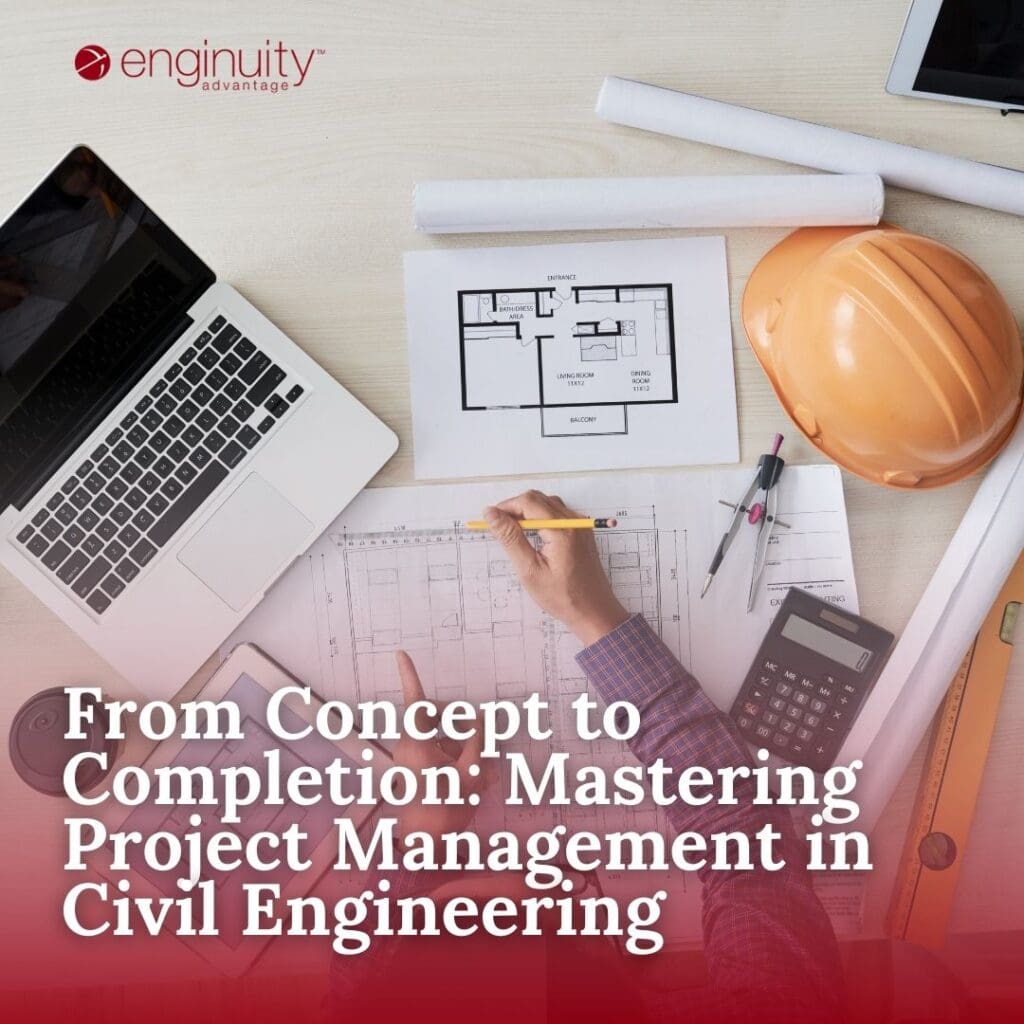Mastering Project Management in Civil Engineering

So, you’ve got the degrees, the technical chops, and a burning passion for shaping landscapes. Awesome start! But let’s chat about that often-overlooked skill that could make or break your career in civil engineering: project management. You see, taking an idea from a mere spark in someone’s imagination all the way to a standing, functional marvel is an art and a science. It’s the silent hero behind those towering skyscrapers, sprawling bridges, and intricate transport systems. Today, as cities grow vertically and our infrastructure needs get more complex, the demand for civil engineers who aren’t just technically adept, but are also project management masters, is soaring. Ready to be the linchpin everyone relies on? Let’s uncover how mastering project management can set you leagues ahead in the civil engineering world.
Bridging the Gaps (Pun Intended!)
Alright, let’s get real for a second. Civil engineering, there are countless times when things don’t exactly go according to plan. Surprise soil conditions, unexpected budget cuts, unpredictable weather patterns – you name it. It’s like trying to play Jenga on a seesaw sometimes. But that’s where stellar project management steps in. By actively forecasting, adjusting, and mitigating these curveballs, you become the bridge (pun absolutely intended) between challenges and solutions.
Furthermore, think about all the professionals involved in any given project – architects, contractors, city officials, and environmental consultants, just to name a few. Managing and coordinating between all these stakeholders? That’s a task in itself! Effective communication is key, ensuring everyone is on the same page, even when that page might be constantly rewriting itself. Studies even indicate that poor communication is responsible for a whopping 56% of project failures.
But here’s the silver lining: by truly mastering the nuances of project management, you not only help your projects sail smoother but also position yourself as an invaluable asset in the team. You become the go-to problem solver, the orchestrator of order amidst chaos. So, while those unexpected hiccups might seem daunting, with the right project management skills in your arsenal, you’re equipped to tackle, adapt, and ultimately, bridge any gap that comes your way.
The Tools of the Trade
Civil engineering isn’t just about hard hats and blueprints anymore; it’s about leveraging the power of cutting-edge tools to bring your project visions to life. The modern-day civil engineer is as much a techie as they are a traditional builder. Let’s dive into some tools that are changing the game for project management in our field.
First up, let’s chat about Building Information Modeling (BIM). 70% of construction professionals have adopted BIM, and it’s reshaping the way projects are visualized and executed. By creating detailed 3D models, BIM allows engineers to spot potential issues before they turn into real-world problems, saving time, money, and a whole lot of headaches.
Then there’s Geographic Information Systems (GIS). Remember when you had to rely on outdated topographical maps? GIS has swooped in as the superhero of spatial data, providing real-time terrain information and environmental factors, ensuring you’re always building with the most current data in hand. Recent stats show that projects using GIS are 45% more likely to stay on schedule.
And let’s not forget about Project Management Software tailored for civil engineering. Platforms like AutoCAD Civil 3D, Microsoft Project, or Primavera P6 are enabling engineers to meticulously plan, schedule, and monitor each project phase. The result? A whopping 48% reduction in overall project duration when these tools are effectively utilized.
For those quick team huddles or urgent revisions, collaboration tools like Slack, Zoom, or Trello are proving invaluable. They break down communication barriers, especially when your team is scattered across different locations or even time zones.
The tools at your disposal are evolving at a rapid pace. But remember, the real magic happens when you seamlessly blend these technological marvels with your core engineering skills. So, gear up, stay updated, and watch as you transform the landscapes of tomorrow with unmatched precision and efficiency.
The Three Ps: Planning, Prioritizing, and Problem-Solving
Ah, the fundamental trio that governs the realm of civil engineering! The seamless orchestration of planning, prioritizing, and problem-solving is what separates a successful project from one that’s fraught with delays, ballooning budgets, and unhappy stakeholders. Let’s unravel each of these power-packed Ps a bit more.
- Planning: This isn’t just about drafting a rough timeline on a whiteboard. It’s about diving deep, forecasting potential hurdles, and setting up contingency plans. With research showing that 37% of projects fail due to lack of clear objectives, meticulous planning has never been more critical. And in the context of civil engineering, where the scope of projects can span years, if not decades, planning becomes an ever-evolving process. This involves regular revisions, stakeholder feedback loops, and flexibility to adapt to changing circumstances.
- Prioritizing: Ever felt like you’re juggling a dozen tasks and not sure which one to tackle first? You’re not alone. In civil engineering, where every decision can have lasting implications, prioritizing becomes an art form. It’s reported that companies that excel in project prioritization are 59% more likely to achieve high project success rates. Whether it’s deciding between immediate fixes or long-term solutions, or juggling resources between concurrent projects, mastering the art of prioritization can be your game-changer.
- Problem-Solving: No matter how well you plan or prioritize, problems will arise. It’s the nature of the beast. What sets apart top-tier civil engineers is their ability to tackle challenges head-on with innovative solutions. From sudden environmental concerns to unexpected structural issues, the ability to think on your feet is invaluable.
But here’s the secret sauce: the real magic happens when you interlink these three Ps. When your planning is in sync with your prioritization and backed by solid problem-solving skills, you’re not just navigating the treacherous waters of civil engineering; you’re mastering them. So, as you embark on your next project, remember to give a little extra love to these three Ps, and watch as they work their wonders on your path from concept to completion.
Communication is King (or Queen)
Clear communication isn’t just a nice-to-have; it’s the linchpin that holds everything together. Consider the fact that these projects often bring together a diverse group of professionals, from architects and urban planners to environmental specialists. And it’s not just about the internal team. Think about all of the external stakeholders—local councils, environmental boards, and even the general public. Effective communication with these groups can be the difference between smooth approvals and frustrating roadblocks. Then there’s the financial side of things. Misunderstandings or lack of clear directives can result in errors that hit the budget hard, sometimes to the tune of millions. But it’s not all doom and gloom.
A culture of open communication fosters trust, boosts team morale, and facilitates quick decision-making. Continuous feedback loops can also act as early warning systems for potential issues. So, in essence, good communication in civil engineering isn’t just about conveying information—it’s about building literal and metaphorical bridges, ensuring understanding, and paving the way for project success. Next time you dive into a project, remember to prioritize those chats, emails, and meetings. Your project might just depend on it.
Always Be Learning (ABL)
For starters, think about the technological advancements in the past decade alone. Tools like Building Information Modeling (BIM) have revolutionized how engineers visualize and plan projects. New materials, such as self-healing concrete or advanced polymers, are set to redefine infrastructure durability and sustainability. By 2030, experts predict that the global market for smart materials will reach a staggering $158.21 billion.
Beyond materials and tech, there’s also the rapidly growing sphere of sustainable and eco-friendly engineering solutions. With climate change concerns becoming more pressing, engineers worldwide are innovating greener, more efficient methods. In fact, 68% of civil engineering firms now have dedicated teams focusing solely on sustainability.
But how does one stay updated amidst this avalanche of information? It’s simple: continuous professional development. Attend workshops, participate in webinars, join engineering forums, and get your hands on the latest industry publications. The goal isn’t just to stay relevant but to be at the forefront, anticipating changes and leveraging new knowledge for innovative solutions. Being prepared for it makes all the difference.
Mastering project management in civil engineering? It’s not just a good-to-have; it’s a NEED-to-have. Be the driving force that takes projects from sketches on paper to tangible marvels. With the right blend of technical and soft skills, you’ll not just complete projects; you’ll nail them.
It Doesn’t Have To Be A Solo Mission
Navigating the intricate world of project management can feel like piecing together a jigsaw puzzle, but it doesn’t have to be a solo mission. If you’re a budding civil engineer or even a seasoned pro aiming for that next big breakthrough, our seasoned squad is amped to back you up! Check out some of our job openings today!
Unlock Dream Careers & Elite Talent: Just One Click Away!


